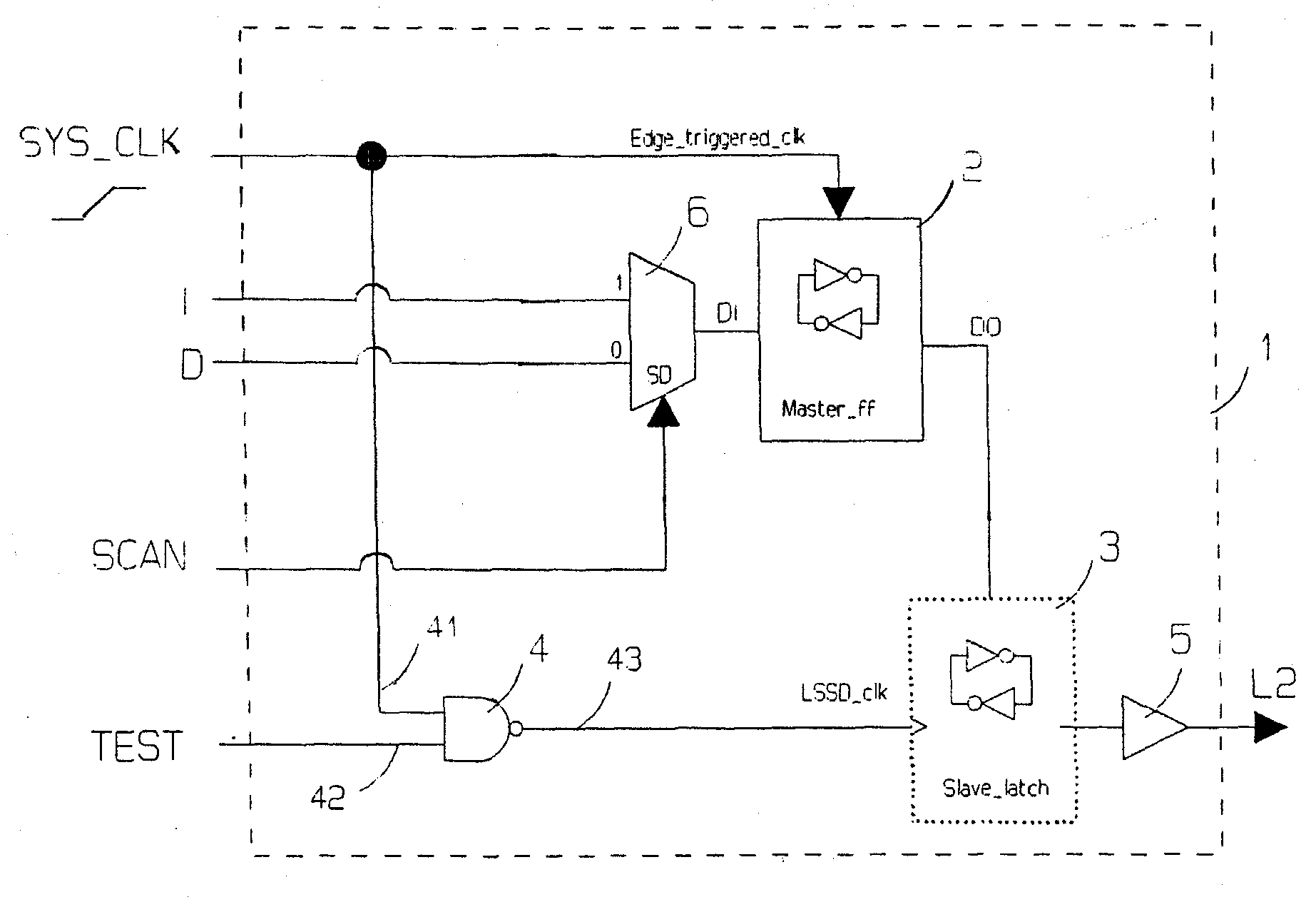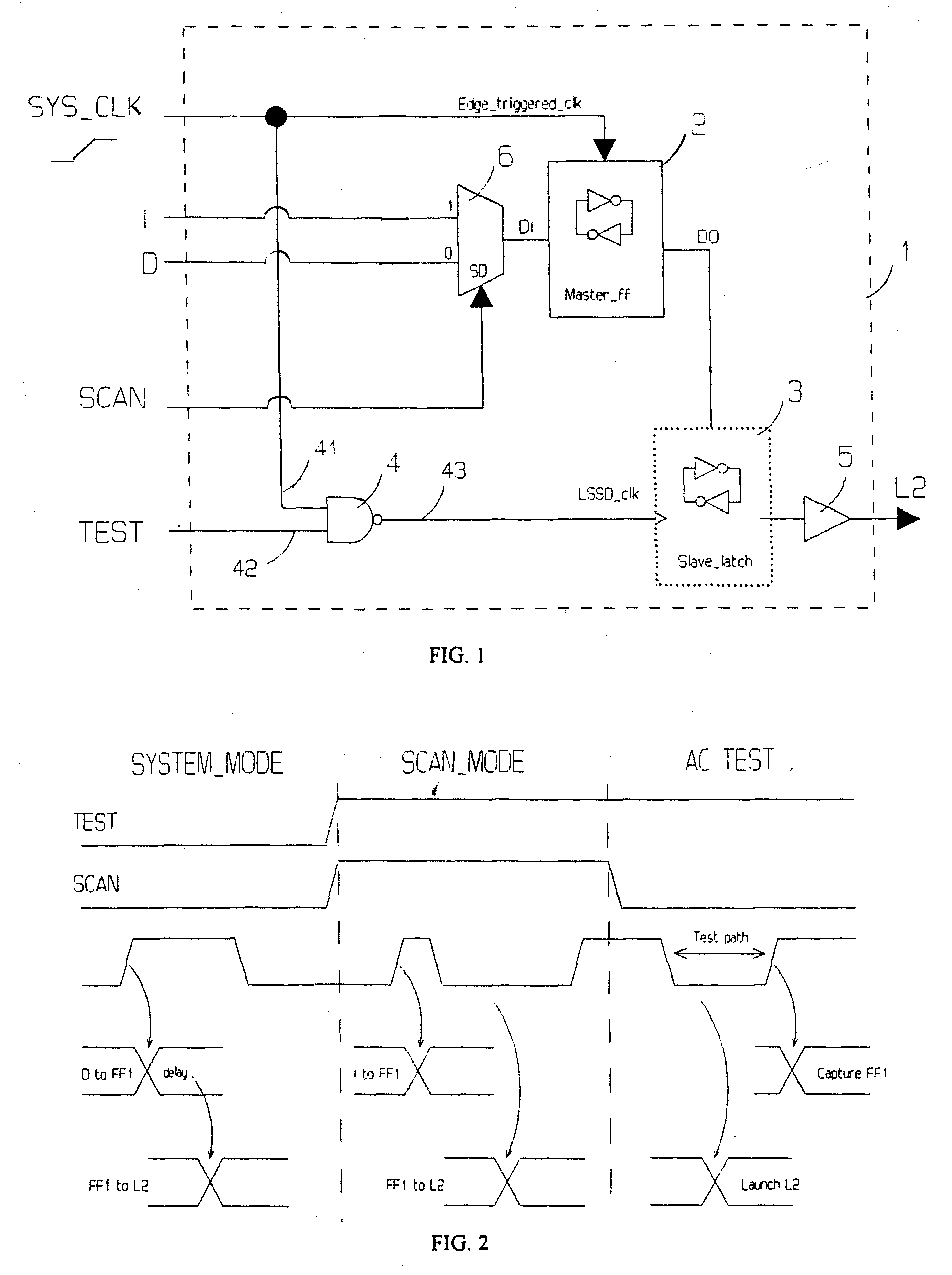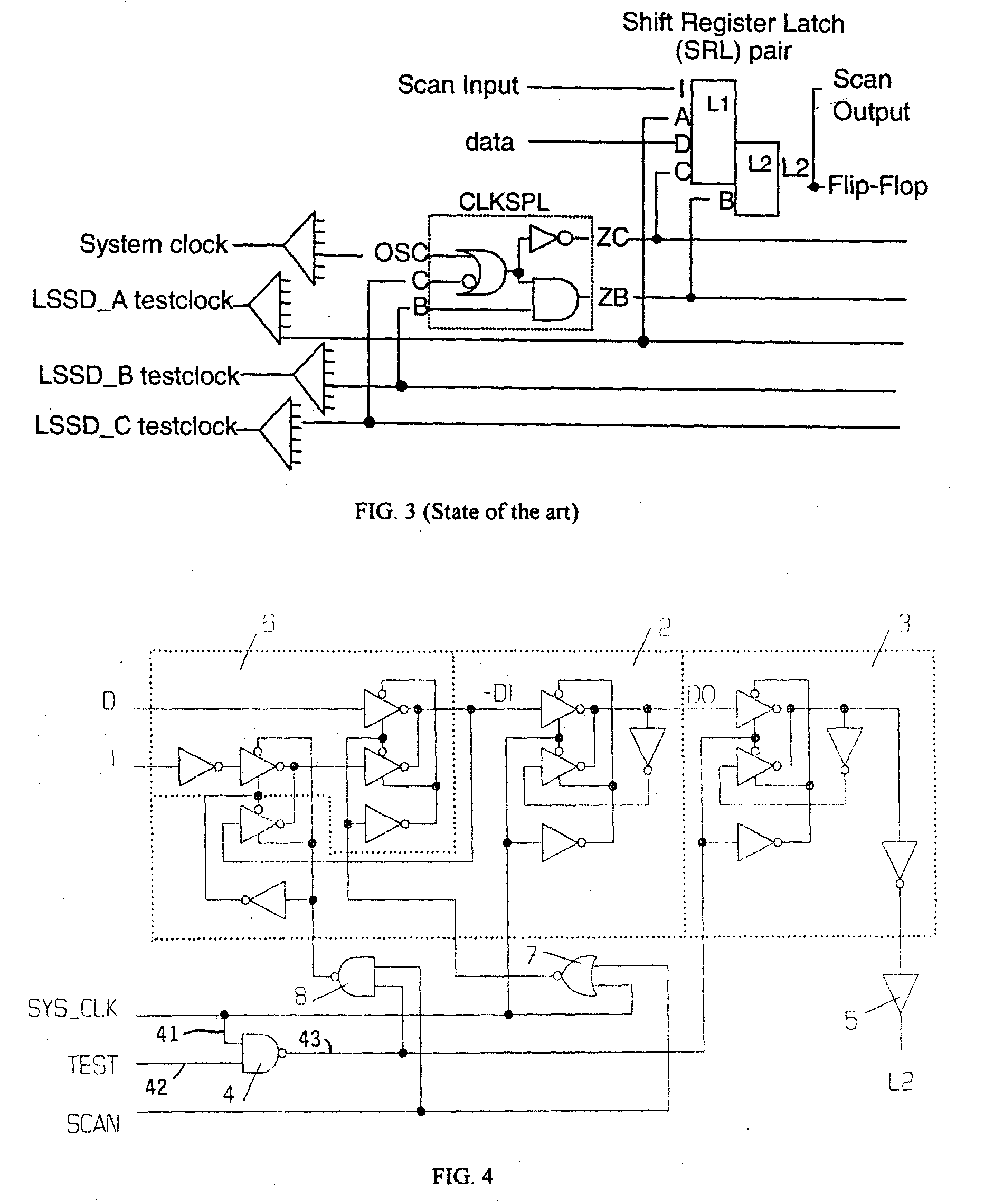Edge-triggered master + LSSD slave binary latch
a binary latch and master technology, applied in the field of new binary latches, can solve the problems of skew-managed three lssd testclock trees, complex test logic of circuits containing these latches, etc., and achieve the effect of higher driving capabilities
- Summary
- Abstract
- Description
- Claims
- Application Information
AI Technical Summary
Benefits of technology
Problems solved by technology
Method used
Image
Examples
Embodiment Construction
[0018]FIG. 1 depicts a binary latch 1 with an edge triggered master flip-flop 2, with a clock input (edge-triggered clock input) connected to the system clock SYS_CLK. The master flip-flop 2 has a data input DI, which is connected to the output of a multiplexer 6, which connects data signals D or scan input signals I according to a selection signal SCAN with the master flip-flop.
[0019] The output DO of master flip-flop 2 is connected to a level sensitive scan design (LSSD) slave latch 3. This novel combination allows testing the device with LSSD principals, yet have the circuit behave in functional mode as an edge-triggered flip-flop.
[0020] The clock signals for the slave latch are provided by a NAND gate 4 with a first input 41 which is connected to the system clock SYS_CLK and a second input 42 which is connected with a test input TEST.
[0021] The output 43 of the NAND gate 4 is connected to the LSSD slave latch clock input LSSD_clk.
[0022] This makes the LSSD slave latch 3 beha...
PUM
 Login to View More
Login to View More Abstract
Description
Claims
Application Information
 Login to View More
Login to View More - R&D
- Intellectual Property
- Life Sciences
- Materials
- Tech Scout
- Unparalleled Data Quality
- Higher Quality Content
- 60% Fewer Hallucinations
Browse by: Latest US Patents, China's latest patents, Technical Efficacy Thesaurus, Application Domain, Technology Topic, Popular Technical Reports.
© 2025 PatSnap. All rights reserved.Legal|Privacy policy|Modern Slavery Act Transparency Statement|Sitemap|About US| Contact US: help@patsnap.com



